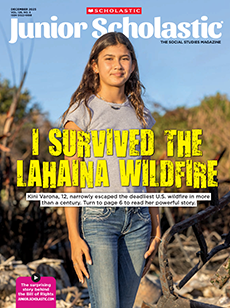The shark shot is one example of a fast-growing problem in the digital age: phony photos. As tech tools once available only to pros become more accessible and sophisticated, just about anyone can alter photographs.
Some doctored images are meant to be a joke (think: a pic of your birthday party with Beyoncé added in). But others are created to spread lies and stir up controversy. Russian operatives, for instance, filled social media networks with phony images as part of an effort to influence the 2016 U.S. presidential election.
Like other forms of fake news, manipulated photos can make people believe things that aren’t true. They can be even more powerful than fake articles, experts say, because people are more likely to trust a photograph. Plus, images arouse strong feelings in people instantly, says John Silva of the nonprofit News Literacy Project.
“With the right image and the right headline,” he says, “you can manipulate people’s emotions and make them believe all sorts of things.”







